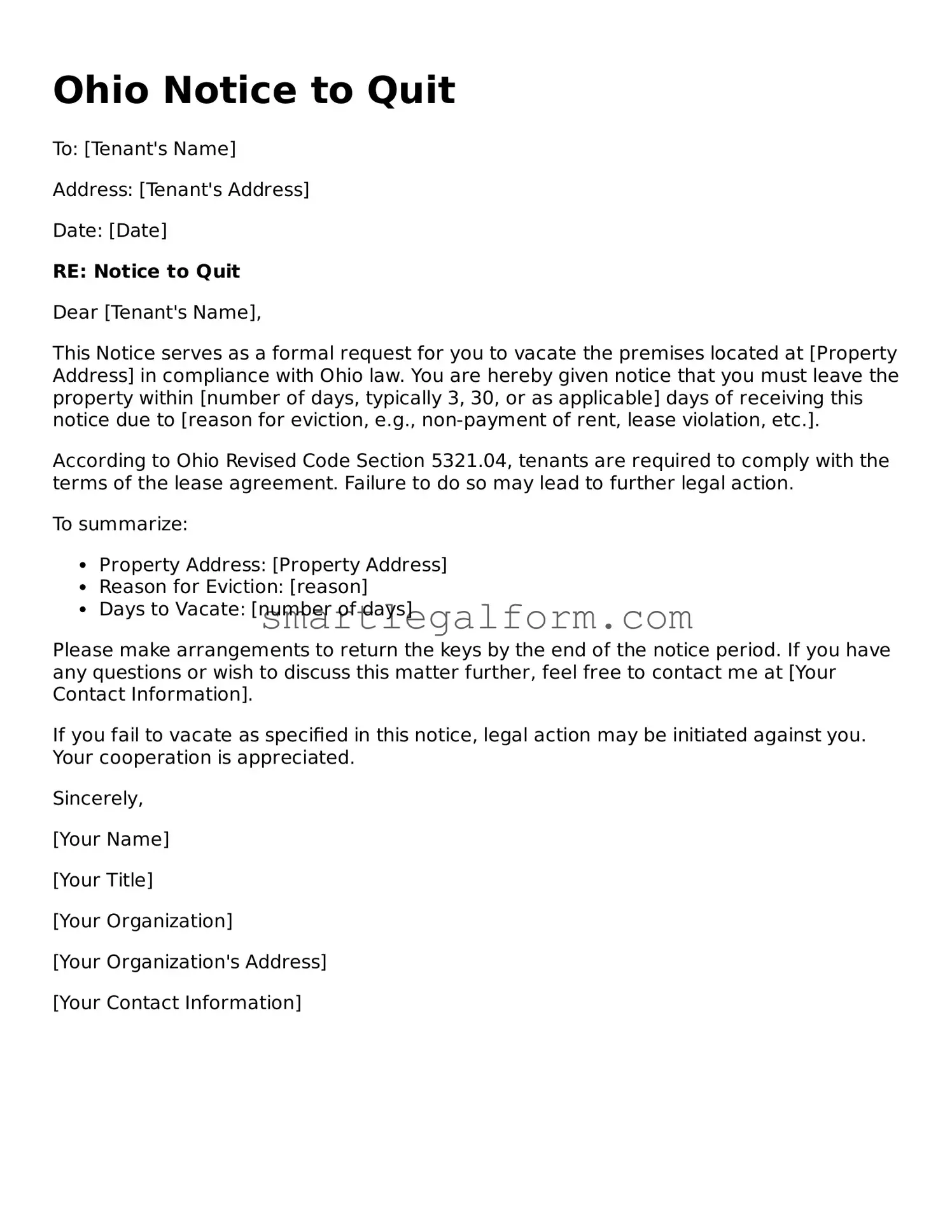Ohio Notice to Quit
To: [Tenant's Name]
Address: [Tenant's Address]
Date: [Date]
RE: Notice to Quit
Dear [Tenant's Name],
This Notice serves as a formal request for you to vacate the premises located at [Property Address] in compliance with Ohio law. You are hereby given notice that you must leave the property within [number of days, typically 3, 30, or as applicable] days of receiving this notice due to [reason for eviction, e.g., non-payment of rent, lease violation, etc.].
According to Ohio Revised Code Section 5321.04, tenants are required to comply with the terms of the lease agreement. Failure to do so may lead to further legal action.
To summarize:
- Property Address: [Property Address]
- Reason for Eviction: [reason]
- Days to Vacate: [number of days]
Please make arrangements to return the keys by the end of the notice period. If you have any questions or wish to discuss this matter further, feel free to contact me at [Your Contact Information].
If you fail to vacate as specified in this notice, legal action may be initiated against you. Your cooperation is appreciated.
Sincerely,
[Your Name]
[Your Title]
[Your Organization]
[Your Organization's Address]
[Your Contact Information]
